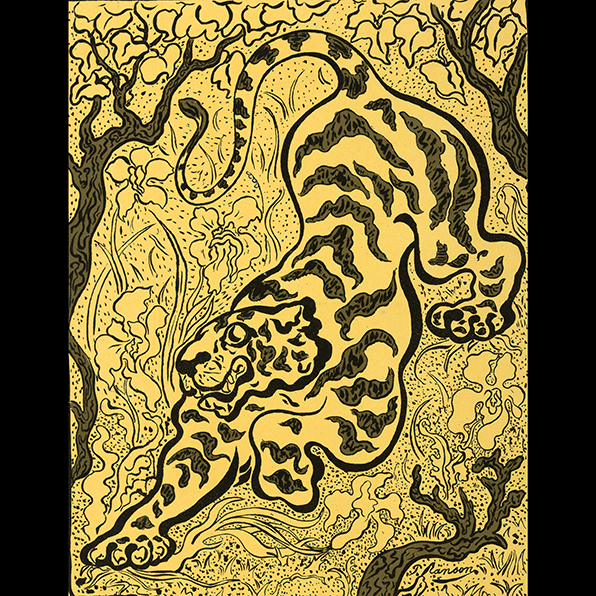Arabesque
December 14, 2019–March 22, 2020

Paul Elie Ranson
Tiger in the Jungle
c. 1893
Color lithograph on paper, 14 7/16 x 11 3/16 in.
Museum purchase, Joseph O. Eaton Fund.
Williams College Museum of Art, 57.33
Implying infinite freedom and open-ended, self-engendering form, the arabesque motif is deeply associated with Islamic art and architecture while also being central to key movements in European art. With a history stretching back to antiquity, arabesque lies at the heart of debates over ornament and meaning in art. Long relegated to the status of frame or border, and used chiefly as a decorative addition, arabesque found new life in the nineteenth century as it "broke out of the frame" and came into its own as an independent driver of pictorial innovation.
The exhibition will trace this process over a series of moments in European art when arabesque was in the ascendant—from German Romanticism to the Pre-Raphaelites, Nabi artists, and Art Nouveau. It will feature a select array of works from a wide range of media, including paintings, prints, drawings, book illustrations, posters, furniture, and textiles. A first section, "Rococo to Romanticism," will show arabesque's transition from a decorative formal device to a structural, although idiosyncratic, element of composition. A middle section, "Islamic-Inspired Arabesque," will pay special attention to the European reception of Islamic art and architecture, particularly its impact on the theory and practice of design. The final section, "Arabesque Unleashed," will present a broad array of formal experiments in arabesque from the end of the nineteenth century, including book designs and illustrations, prints, paintings, and posters.
Generous support for this exhibition is provided by Denise Littlefield Sobel.